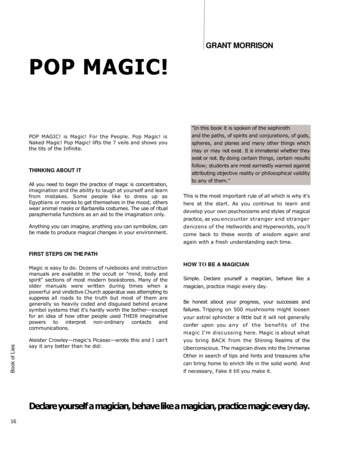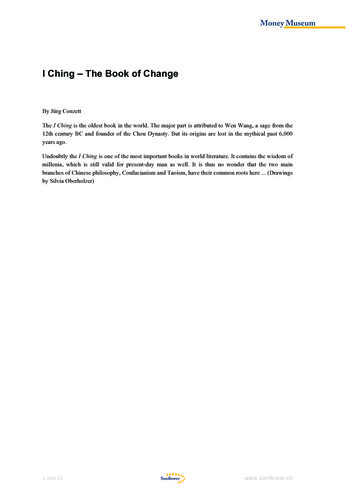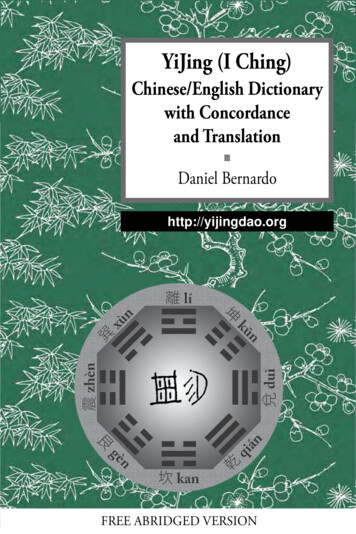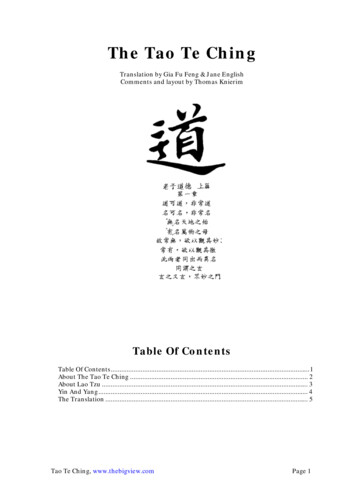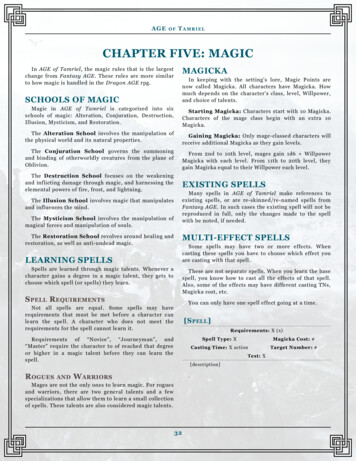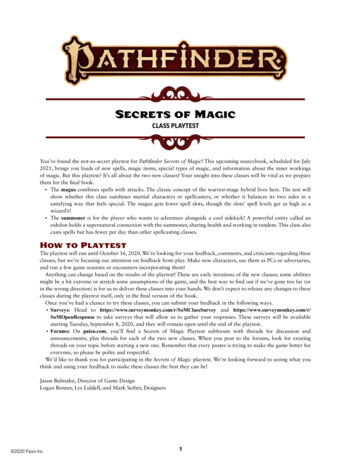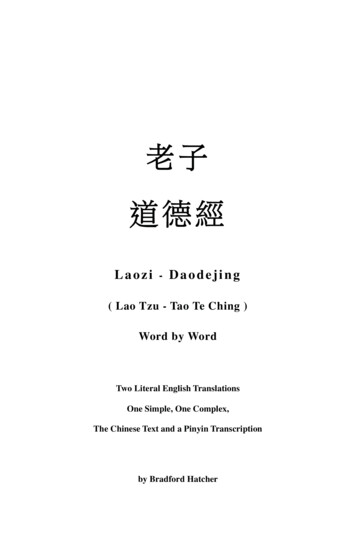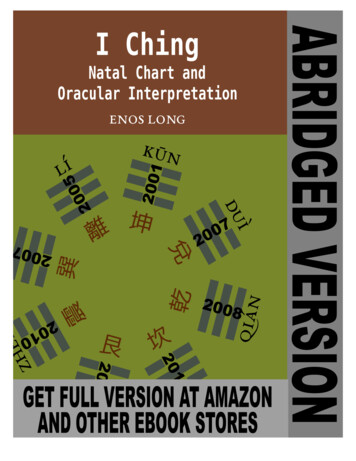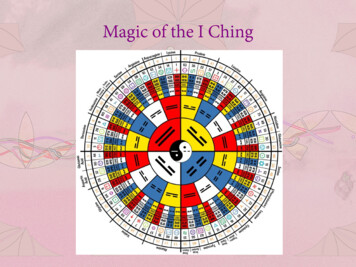
Transcription
Magic of the I Ching
What is the I Ching? Ancient Taoist spiritual system–– A synthesis of science, spirituality, and art–– Tousands of years old, “used as an oracular tool to makeclear decisions in harmony with nature”Condenses the patterns of living systems into 64 primaryarchetypes (Book of Changes)Each of the 64 hexagrams of the I Ching is a geometry, anatural image, and a poetic expressionTere is a direct correlation between the hexagrams of the IChing and the codons of DNAA language of light that speaks directly to the DNA
Nature of the I Ching For those who resonate with the form of the I Ching, it isa portal through the mind into the heartTe I Ching begins with the understanding that the lifeforce, or Tao, is essentially one, whole, and completeTe many forms of nature and the apparent diversity oflife arises from Tao expressing itself through myriadpatterns, which all carry the same seed of simplicity,harmony, and purityTe I Ching provides clarity in understanding life'spatterns, and a solid foundation for creative exploration
Structure of the I Ching Te structure of the I Ching is rooted in simplicity andharmonyTe I Ching leads from duality to unity, and from unityto infinite expressions–– At the heart is the yin/yang binaryOpposites are complementaryYin and yang separate only to re-uniteNon-dual–Yin exists within yang, yang exists within yin
Structure of the I Ching Duality leads to trinity (father, mother, child)–Tree yin or yang lines give rise to a trigram, which isassociated with a particular image/energy (read from bottomto top)
Structure of I Ching Two trigrams combine to form a hexagram, whichcompletes one cycle of evolutionTe lower trigram represents what iswithin (subjective), whereas theupper trigram represents what isoutside (objective)Te six lines of a hexagram combinein 3D to form a tetrahedron, thesimplest polyhedronEvery hexagram has a partner, andthese partners combine to formmerkabas, the simplest (non-circular)form of perfect balance and unity
Applications of the I Ching Spiritual contemplation (path of enlightenment)–“Contemplation utilises aspects of both meditation andconcentration. It is rooted in the corpus callosum. You takethe object of your contemplation and concentrate your wholebeing on it but without any efort or tension. Trueintelligence is activated through the patience and sofness ofthe heart, and only later confirmed by the mind. Here youneed to be a lover of mystery with a beginner's mind, ratherthan arriving as an expert determined to solve a riddle.”(Richard Rudd)
Applications of the I Ching Educational paradigm–––Te I Ching is founded in the understanding that the essenceof nature is harmony and efortless fow. our education thenis not about learning to control life, but learning to listendeeply and cooperate with lifeI Ching begins with simplicity and shows that greatercomplexity arises naturally and easily from simplefoundations. Rather than work through complex systems toarrive at a complex goal, we can explore simplicity and allowthe applications and manifestations to present themselves.Te I Ching is not a system of belief, rather, it allows us toappreciate the changing nature of life and embrace it withoutfear or ambition. Tis gives us the freedom to find our ownanswers.
Applications of the I Ching Empowerment and activation of inner genius––––Trough the work of Richard Rudd, author of Gene Keys, theI Ching can be seen as a guide to the spiritual potentialcontained in the code of the DNABy contemplating these genetic archetypes, they are activatedin our DNATese archetypes can also beconverted to sound and movement,allowing us to speak directly to ourDNATe creative potential in the I Chingis limitless
Example of Hologenetic Profile
More Resources Gene Keys by Richard RuddTao Oracle by Ma Deva � (Drumming the I Ching)I Ching translation by Richard Wilhelm
What is the I Ching? Ancient Taoist spiritual system – Tousands of years old, “used as an oracular tool to make clear decisions in harmony with nature” – Condenses the patterns of living systems into 64 primary archetypes (Book of Changes) A synthesis of science, spirituality, and art – Each of the 64 h
